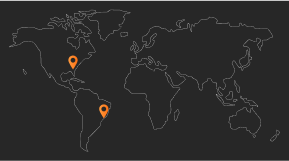Beyond MCP and A2A: The Next Step Is AI Agent Team Orchestration

The evolution of artificial intelligence has been marked by significant advances in various fields, from natural language processing to deep learning systems. However, we are reaching a turning point where true innovation no longer lies in developing increasingly powerful individual models, but in how these systems interact with one another.
While communication protocols such as MCP (Anthropic) and A2A (Google) take center stage in tech discussions, a silent revolution is underway: the orchestration of AI agent teams.
This article explores how we are moving beyond mere interoperability between AI agents and entering an era of orchestrated collaboration, where complex systems of agents work together in a coordinated manner, aligned with specific organizational values.
By understanding this evolution, we can glimpse not only the next technological steps but also the profound implications for businesses and society.
The Limitations of Current Communication Protocols

Anthropic's MCP (Multi-agent Communication Protocol) and Google’s A2A (Agent-to-Agent) represented a crucial first step in achieving interoperability between AI agents. Essentially, these protocols establish a “common language” for different AI models to exchange information and requests. It’s like creating a universal standard so that different operating systems can recognize the same file types.
However, these protocols suffer from major limitations:
Focus on basic communication: While they solve the fundamental problem of information exchange, they don’t address complex coordination among multiple agents with different capabilities.
Lack of hierarchical structure: They don’t clearly define authority or responsibility relationships among agents, resulting in a flat communication environment.
Weak reliability verification: They lack robust mechanisms to verify the authenticity and integrity of agent communications.
Insufficient ethical governance: They don’t incorporate frameworks to ensure that agent interactions follow predefined ethical guidelines.
These limitations become particularly evident when we envision not just two agents communicating, but entire ecosystems of dozens or hundreds of specialized agents working together on complex tasks.
LOKA: A New Architecture for Agent Teams

It’s within this context that LOKA (Layered Orchestration for Knowledgeful Agents) emerges, developed by the renowned Carnegie Mellon University. More than just a communication protocol, LOKA represents a complete architecture to organize and manage teams of AI agents, divided into four fundamental layers:
Identity Layer: Establishes unique and verifiable identities for each agent, functioning like a “digital ID.” This enables traceability and clear accountability for actions taken.
Secure Communication Layer: Goes beyond simple message exchange, implementing encryption and integrity verification to ensure that communications between agents are not compromised.
Ethical Governance Layer: Embeds ethical guidelines and organizational values directly into the communication architecture, ensuring that agent interactions follow predefined principles.
Cryptographic Verification Layer: Uses advanced cryptographic techniques to validate the authenticity of agent communications and actions, creating an immutable record of all interactions.
This layered approach represents a qualitative leap over existing protocols, transforming what would otherwise be simple “conversations” between agents into an organized “society” of agents, with rules, structures, and clear responsibilities.
The Competitive Advantage of Orchestration
Visionary companies like UiPath, PwC, and AWS have already realized that the true value doesn’t lie in owning isolated AI agents, no matter how advanced, but in knowing how to orchestrate them as cohesive teams. This realization is creating a new competitive frontier in the tech market for several reasons:
Specialization and Complementarity
Orchestrated agent teams allow each component to specialize in specific tasks, creating a system of complementarities. One agent may specialize in data analysis, another in content generation, another in legacy system interfacing, and so on. This intelligent division of labor significantly amplifies the overall system’s capabilities.
Dynamic Scalability
A well-designed orchestration architecture enables the dynamic addition or removal of agents in the ecosystem according to workload and requirements, without the need to redesign the entire system.
Increased Resilience
Systems composed of orchestrated agents are inherently more resilient, as the failure of one component does not necessarily compromise the system’s functionality. Backup agents can temporarily take over, and the architecture can reorganize itself to overcome failures.
Alignment with Organizational Values
Perhaps the most significant aspect is the ability to align agent behavior with the organization’s values and principles. LOKA’s ethical governance layer, for instance, allows companies to embed their principles directly into the orchestration architecture, ensuring that every agent action reflects the organization's culture and values.
Emerging Use Cases
AI agent team orchestration is already finding practical applications in various sectors:
Finance and Compliance
Financial institutions are deploying agent ecosystems to monitor transactions, detect suspicious patterns, and ensure regulatory compliance. Specialized agents work together: some analyze real-time transactions, others review history, while others consult updated regulatory databases. An "orchestrator agent" coordinates all these efforts, prioritizing alerts and escalating critical issues for human review.
Healthcare and Medical Research
In the medical field, agent teams are accelerating the research of new drugs and treatments. Agents specialized in scientific literature analysis work alongside agents modeling molecular interactions and simulating drug effects. The orchestration system ensures that every step of the research process is properly documented and follows rigorous ethical standards.
Smart Manufacturing
Factories are implementing agent teams to optimize production, predictive maintenance, and quality control. Different agents monitor specific machines, analyze sensor data, and coordinate logistics operations. Orchestration ensures production continues to flow even when conditions change or issues arise, with agents collaborating to find optimal solutions.
Omnichannel Customer Service
Retail and service companies are building agent teams to deliver truly omnichannel customer support. Different agents specialize in specific channels (chat, voice, email), while knowledge agents aggregate information about products and policies. Orchestration ensures a consistent and personalized experience, regardless of how many times the customer switches channels or resumes a previous conversation.
Implementation Challenges
Despite its transformative potential, orchestrating AI agent teams presents significant challenges:
Technical Complexity
Designing robust orchestration architectures requires advanced expertise in systems engineering, AI, and cybersecurity. The interaction among multiple autonomous agents can create unforeseen emergent behaviors, demanding sophisticated monitoring and control systems.
Governance and Accountability
Assigning responsibility in multi-agent systems raises complex questions. When a decision is made by a set of agents working collaboratively, who is accountable for the outcome? How can we audit and trace decisions within a distributed AI system?
Integration with Legacy Systems
Many organizations face the challenge of integrating agent teams with legacy systems that were never designed for such interaction. Creating compatible interfaces and communication protocols can be a significant technical hurdle.
Ethical and Regulatory Issues
The rapid development of AI agent teams is happening in a regulatory environment still trying to understand and standardize single-agent AI. Issues such as algorithmic bias, transparency, and the right to explanation become even more complex in multi-agent systems.
The Future of Agent Orchestration
Looking ahead on the technological horizon, we can identify emerging trends that will shape the future of AI agent orchestration:
Metacognitive Agents
The next generation of orchestration architectures will likely incorporate metacognitive agents, systems specialized in monitoring, evaluating, and adjusting the behavior of other agents. These meta-agents will act as supervisors, ensuring that the entire ecosystem remains aligned with long-term goals and ethical principles.
Interorganizational Agent Federations
As orchestration standards like LOKA become more established, we will see the emergence of federations of agents that transcend organizational boundaries. Partner companies will be able to create shared ecosystems of agents, operating under mutually agreed governance protocols, transforming supply chains and collaborative processes.
Simulation Environments for Team Training
Developers have created sophisticated simulation environments to train and evaluate agent teams before deploying them in production. These “virtual training grounds” will allow for testing how different team configurations respond to varied scenarios, identifying vulnerabilities, and optimizing collaboration.
Orchestration Standards and Certifications
Just as standards emerged for computer networks and web communications, we will see the development of formal orchestration standards for AI agents. Organizations such as ISO, IEEE, and NIST are likely to develop certification frameworks to assess the security, reliability, and ethical alignment of orchestration architectures.
Conclusion
Technological evolution is leading us inexorably toward a future in which AI agents no longer operate in isolation, but as members of orchestrated teams with specific purposes.
While MCP and A2A protocols represent important advances in basic agent communication, architectures like LOKA signal the next major frontier: the creation of sophisticated structures to coordinate, govern, and align intelligent agent teams.
For organizations aiming to stay competitive in this new landscape, the focus must shift from simply adopting AI agents to developing orchestration capabilities—the ability to design, implement, and manage cohesive ecosystems of agents aligned with organizational values. Those who master this art will be well-positioned to reap the transformative benefits of the next era of artificial intelligence.
The true AI agent revolution won’t come from increasingly powerful standalone agents, but from interconnected ecosystems of specialized agents, working in harmony under orchestration structures that ensure not only operational efficiency but also ethical alignment and accountability.
Just like a symphony orchestra, the transcendent value doesn’t lie in the individual instruments, no matter how refined, but in the harmony that emerges when all play together, guided by a common score and unified direction.
